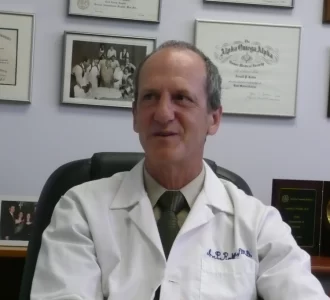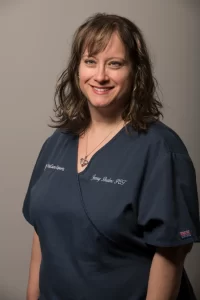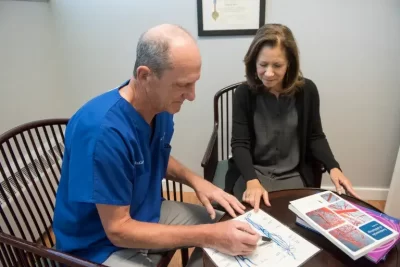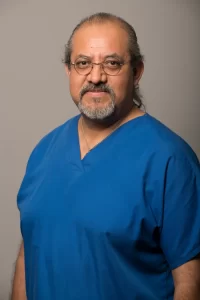The following three groups best describe the majority of venous and lymphatic disorders;
- Varicose veins are swollen, skin-visible veins that can take on the appearance of blue or purple, twisted cords. Though they can develop anywhere on the body, but most frequently affect the legs.
- Localized fluid retention, known as lymphedema, is brought on by insufficient lymph fluid drainage. Poor lymph outflow results in extravascular fluid accumulation and a hard enlargement of the afflicted limb (arm or leg).
- When blood clots impede or block veins, it is called venous thrombosis (blood arteries that transport blood back to the heart from the body). Venous thrombosis includes deep vein thrombosis (DVT).
At VeinCare Experts we evaluate and treat patients with venous and lymphatic problems using a multidisciplinary approach. Our experts provide an integrated program of diagnostic care and treatment in radiology and vascular medicine.
Symptoms of Venous and Lymphatic Disorder
Signs and symptoms are the following;
-
Varicose vein:
- Dilated veins
- Alterations in skin tone
- Pain in the legs
- Rash
- Leg sensations, such as heaviness, burning, and discomfort
-
Lymphedema:
- The affected arm, chest, or armpit area feeling heavy or constricting
- Anger or discomfort in the affected arm
- The hand is swollen
- Arm afflicted is weakened
-
Venous Thrombosis:
- A single leg’s pain only (usually the calf or inner thigh)
- Swelling in the affected area
- Chest pain
- Bodily weakness or numbness on one side
- Acute alterations in mental state
Diagnosis of Venous and Lymphatic Disorder
In addition to a comprehensive medical history and physical examination, the following diagnostic procedures, or a combination of them, may be performed to find varicose veins;
- Using venous duplex ultrasonography to evaluate the anatomy and blood flow of the leg veins
- Venous magnetic resonance imaging (MRV)
The following methods can be used to identify lymphedema in addition to a thorough medical history and physical examination;
- A nuclear medicine procedure called lymphoscintigraphy is used to image lymphatic arteries and lymph nodes
- Measure volumes
- Testing for electrical conductivity
Risk factors of Venous and Lymphatic Disorder
-
Varicose vein:
- Obesity
- Family background
- Standing or sitting for an extended time repeatedly
- The female gender is at a higher risk
- Pregnancy
- 30 to 70 years of age
-
Lymphedema:
- Radiation and chemotherapy
- A family history
- Cuts, bruises, scrapes, burns, and animal or bug bites (body injuries)
- Filariasis, cellulitis, and lymphangitis (infections)
- Obesity
-
Venous Thrombosis:
- Autoimmune conditions that increase a patient’s risk of blood clots
- Disease or damage to the legs’ veins
- Family background
- Fracture
- Immobility
- Medications that increase the risk of clotting, such as certain contraceptives
- Obesity
Treatment of Venous and Lymphatic Disorder
For patients with venous and vascular problems, specialists at BWH create tailored treatment programs based on the following;
- Age
- General wellbeing
- Medical background
- Type and severity of the illness
- Tolerance of particular treatments or procedures
- Expectations regarding the disease’s progression
- Existence of additional criteria
-
Varicose vein:
- Varicose veins can be removed with the safe and efficient Endovenous Laser Treatment (EVLT®). Laser radiation is used to seal the troublesome varicose veins during (EVLT®) a minimally invasive technique, which is rapid and painless.
- A thin needle injects a solution into the varicose veins during the non-surgical procedure known as sclerotherapy to seal them shut. As the vein’s lining swells in response to the solution, the blood artery is closed off, obstructing blood flow. Most varicose veins are treated in two weeks to two months. However, each vein may need many injections.
- The ambulatory phlebectomy treatment eliminates large surface varicose veins through skin incisions as tiny as 1 mm. There are no scars or stitches needed as a result.
-
Vascular Thrombosis:
- Anticoagulants
- Other drugs include antiplatelet agents, tissue plasminogen activators (tPA), and enzymes, like streptokinase (to dissolve clots)
-
Lymphedema:
Treatment may include;
- Control and prevention are the primary treatment goals.
- Regular use of manual lymphatic drainage: A type of massage therapy that encourages lymph drainage.
- Exercise to help with drainage, flexibility, and strength recovery.
- An elastic bandage or compression sleeve is specifically designed to prevent fluid buildup.
- The arm pump improves lymphatic fluid movement and prevents fluid from accumulating in the arm.
- Elevate the arm over the heart to assist in the drain of fluid buildup.
- Manage your weight.
- Preventative strategies to guard the affected arm against infection and skin deterioration include good skin care.
References:
- https://www.brighamandwomens.org/heart-and-vascular-center/diseases-and-conditions/venous-and-lymphatic-disorders
- https://stanfordhealthcare.org/medical-clinics/center-lymphatic-venous-disorders/treatments.html








Leave a Reply